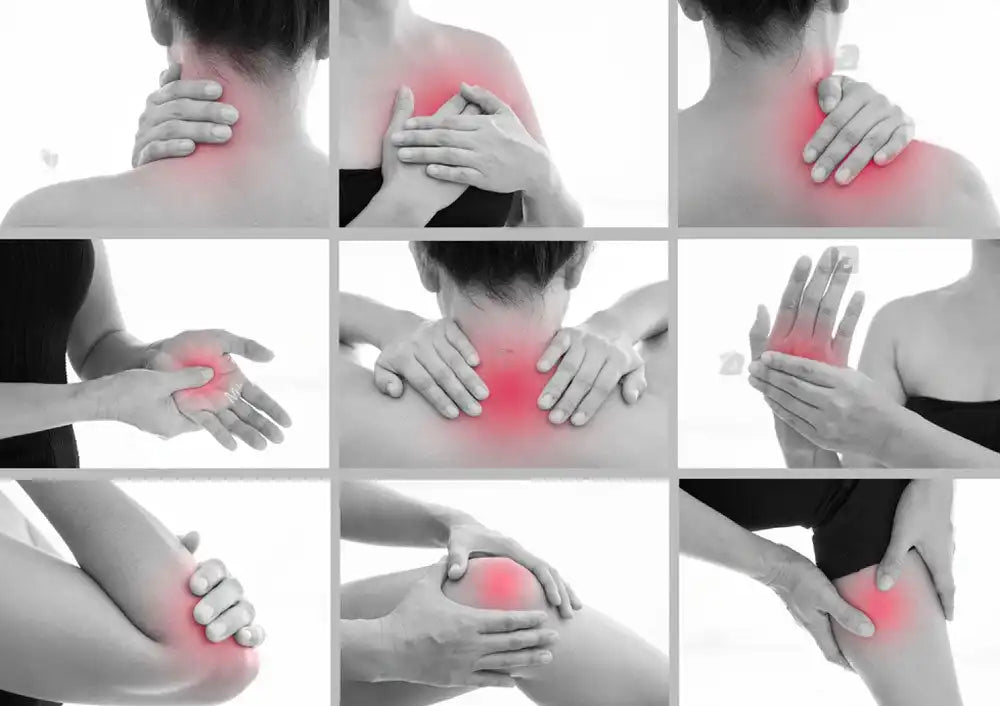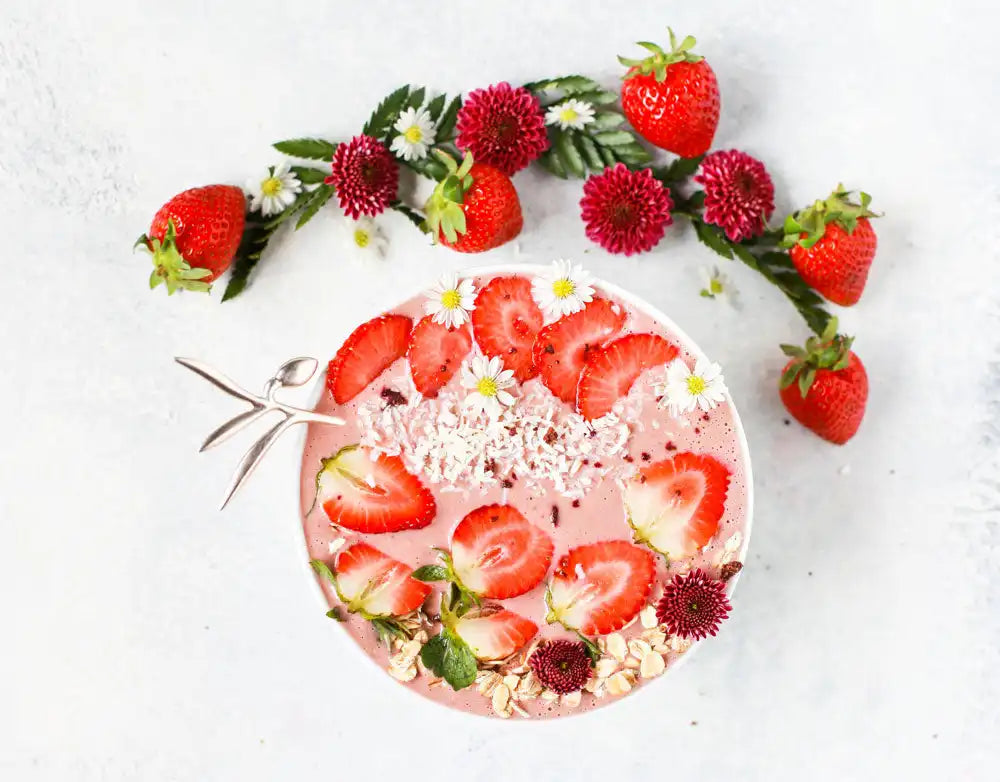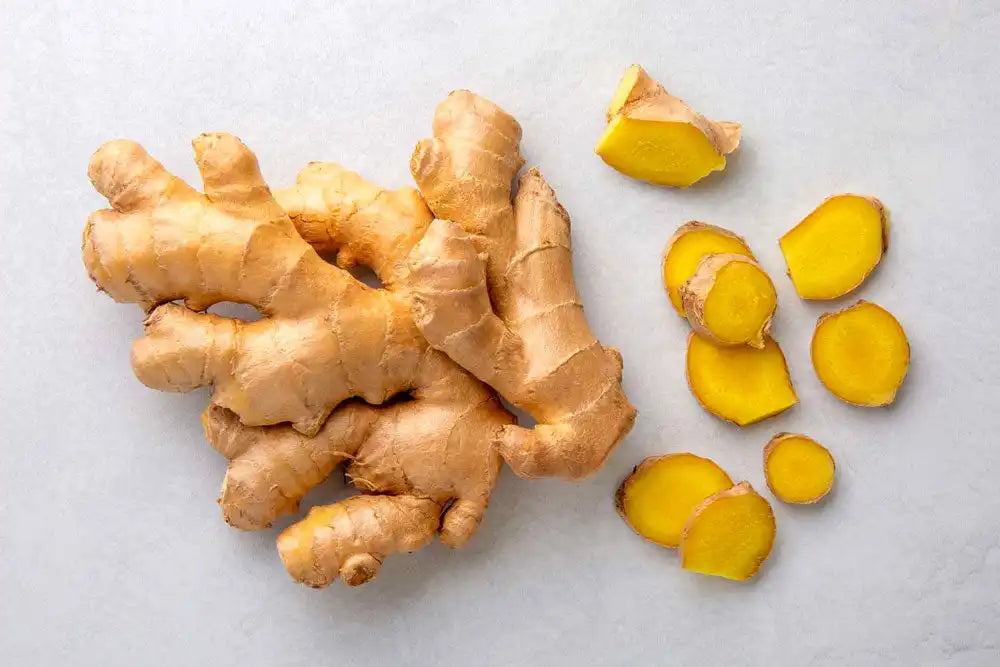PART 1: Reminders about inflammation

1.1 | The mechanism of inflammation
The 4 indicators of inflammation are:
• redness
• the heat
• edema
• pain
When these 4 characteristics are present, it indicates acute inflammation.
Inflammation is governed by our immune system, which in the event of trauma or intrusion of pathogens (viruses, bacteria, parasites, etc.) will activate to protect us.
To put it simply: Yes, inflammation is a protective and restorative physiological process. Its action aims to mobilize the immune cells responsible for “cleaning” the site of inflammation.

1.2 | A 3-step process
Inflammation occurs in 3 stages:
- Vascular stage : blood vessels around the site of inflammation dilate and allow entry of immune cells
- Cellular stage : immune cells arrive en masse to neutralize the aggressor
- Resolution stage : the inflammation stops in the event of an acute episode and the return to normal occurs gradually.
Note that there is chronic inflammation, known as low-level inflammation, which can persist.
The immune system cannot completely resolve the inflammatory process. This chronic inflammation is the underlying mechanism mentioned in many metabolic diseases: cardiovascular diseases, type 2 diabetes, neurodegenerative diseases or rheumatic diseases to name a few. It is therefore important to fight against this inflammation on a daily basis and diet is a powerful lever for action.

1.3 | Inflammation modulators
In this process of inflammation, numerous inflammation-modulating substances intervene:
• histamine allows blood vessels to dilate
• cytokines : these are messengers of inflammation, the interleukins secreted by immune cells will guide the coordinated actions of tissue repair.
• Prostaglandins : derived from fatty acids in cell membranes, they will promote the arrival of immune cells.
• proteins such as CRP (C-reactive protein) which are measured by blood test to indicate inflammation
• repair enzymes
Inflammation is therefore a programmed waltz between these substances and the immune cells to react quickly in the event of problems and repair cellular damage.
To put it simply: This organization requires a lot of equipment to function well, good nutrients, this is where the plate becomes an essential tool to fight against inflammation with so-called “anti-inflammatory” foods.
Part 2: Anti-inflammatory foods
In this article we discuss anti-inflammatory foods. It is relevant to increase the portion of these foods in the event of inflammation but at the same time, it is appropriate to reduce inflammatory foods, in particular ultra-processed foods, animal proteins (mainly dairy products, meats and cold meats) and sugars. .

2.1 | Foods rich in omega 3
The first foods to favor in the event of inflammation are the precious omega 3. These are fatty substances that we neglect in our diets. However, these are essential substances and only provided through food. Their effects are numerous because they are soothing, cardio-protective, anti-oxidant and anti-inflammatory molecules.
These are precious and fragile molecules which fear heat and denature in ambient air. Omega 3s are at the origin of the synthesis of prostaglandins which we talked about above and which modulate inflammation. It is therefore important to provide enough of it with food.
Very useful in cases of inflammation, you find them in:
• Good first cold pressed rapeseed , walnut , flax or camelina oils.
NB: be careful, omega 3s are fragile molecules which fear rising temperatures and which oxidize in ambient air: be sure to keep these oils in the refrigerator and consume them quickly once the bottles are opened.
• Oilseeds , notably walnuts , hazelnuts and Brazil nuts.
NB: consume plain, unroasted and unsalted. Be careful with Brazil nuts: no more than 3/day because they are very rich in selenium and excess selenium can become toxic above 1000 micrograms per day.
• Small fish : sardines, mackerel, herring, anchovies.
• Seeds : flax, hemp, chia
NB: It is better to consume them ground for better assimilation. If you grind them, do it minutely or keep the powder for a short time in the refrigerator and in a container protected from light otherwise the omega 3s will oxidize.
• foods from the blue-white-heart sector : eggs, poultry , etc. Animals from this sector have food enriched with good omega 3.
Enrich your diet with these good fats in case of inflammation, our bodies love them and we lack them.

2.2 | Foods rich in anti-oxidants
Who says inflammation says oxidation . Oxidation is a phenomenon of cellular “rancidity”, like accelerated aging with the diffusion of substances that are unhealthy if they are in excess: free radicals. To combat this mechanism and neutralize excess free radicals, we can increase the proportion of antioxidant foods on our plate:
• colorful fruits and vegetables are full of antioxidants
NB: each pigment or color corresponds to a class of antioxidants. We can cite citrus fruits rich in flavonoids, berries and red fruits rich in anthocyanins or even green vegetables rich in chlorophyll.
• aromatic herbs have anti-oxidant properties:
NB: remember to add to all your dishes but without cooking them so that they retain their virtues: parsley, dill, chives, tarragon or basil.
• green tea is rich in anti-oxidants
• garlic is rich in tocopherols and flavonoids
• cocoa contains quality anti-oxidants
NB: prefer dark chocolate with more than 70% cocoa
• oilseeds contain a lot of anti-oxidants
NB: Pecan tops the list of anti-oxidant foods
Adopting a fresh and colorful cuisine very rich in fruits, vegetables, legumes and aromatic herbs is strongly recommended in cases of inflammation. These antioxidant intakes are essential to fight against the phenomenon of oxidation which accompanies inflammation.

2.3 | Spices are anti-inflammatory foods
Rich in anti-inflammatory molecules, spices are our allies in cases of tendinitis, for example.

Turmeric: the anti-inflammatory food par excellence
The most anti-inflammatory and recognized spice is turmeric. It contains curcumin , an anti-inflammatory molecule widely used in Ayurvedic or Chinese medicine.
NB: this molecule is very difficult to assimilate , that is to say that the active quantity which ultimately passes into the blood is very low compared to the quantities ingested, it is therefore more effective to take a highly assimilable turmeric cure in capsules .

Chili peppers
Peppers contain capsaicin which is anti-inflammatory and analgesic (calming for pain).
NB: be careful to avoid in people who suffer from gastric acidity, the digestive tolerance of peppers varies depending on the profile.

Ginger
Ginger contains gingerols, which are anti-inflammatory and antioxidant. Their properties are close to those of chili peppers.
NB: be careful in people with a fragile intestine, ginger is a digestive stimulant and can irritate sensitive people.
2.4 | Foods rich in enzymes
The enzymes will participate in the lysis (degradation) of debris at the site of inflammation and have anti-edematous properties.
Pineapple
Rich in bromelain , an enzyme useful in cases of edema, pineapple can be consumed in cases of pain.
NB: It is preferably eaten fresh and raw.
Papaya
Rich in enzymes, notably papain , papaya is also full of antioxidants thanks to its carotenoids which give it its orange color.
NB: papaya can be eaten as a dessert or salad as a raw vegetable, it is delicious.
As you will have understood, the body has vital needs for essential nutrients, which are increased in the event of inflammation.
Things to remember when adopting an anti-inflammatory diet:
• Avoid ultra-processed foods and cook raw foods
• Favor fruits, vegetables, legumes and aromatic herbs
• Reduce animal proteins: meats, cold meats and dairy products which are inflammatory.
• Season with the right spices: turmeric, black pepper, etc.
• Increase consumption of omega 3
• Add color to your plates for anti-oxidants: try rainbow plates 3 times/week with quarters of raw and cooked vegetables of all colors
These tips are valid for acute inflammation such as tendonitis, otitis or cystitis but they can be adopted for more daily anti-inflammatory cooking in cases of chronic inflammation.



